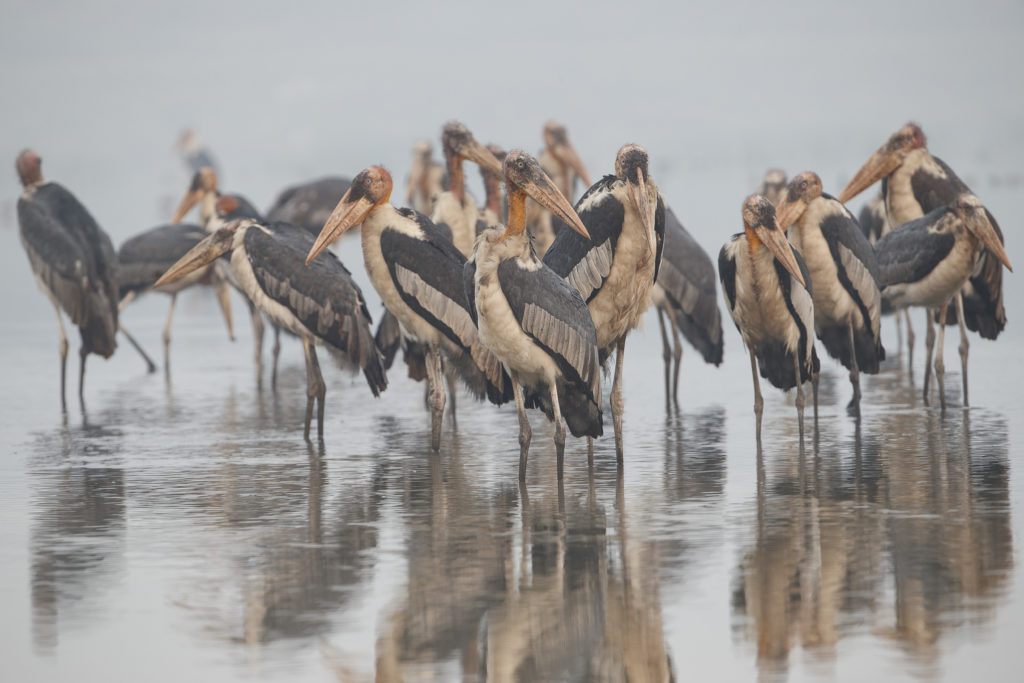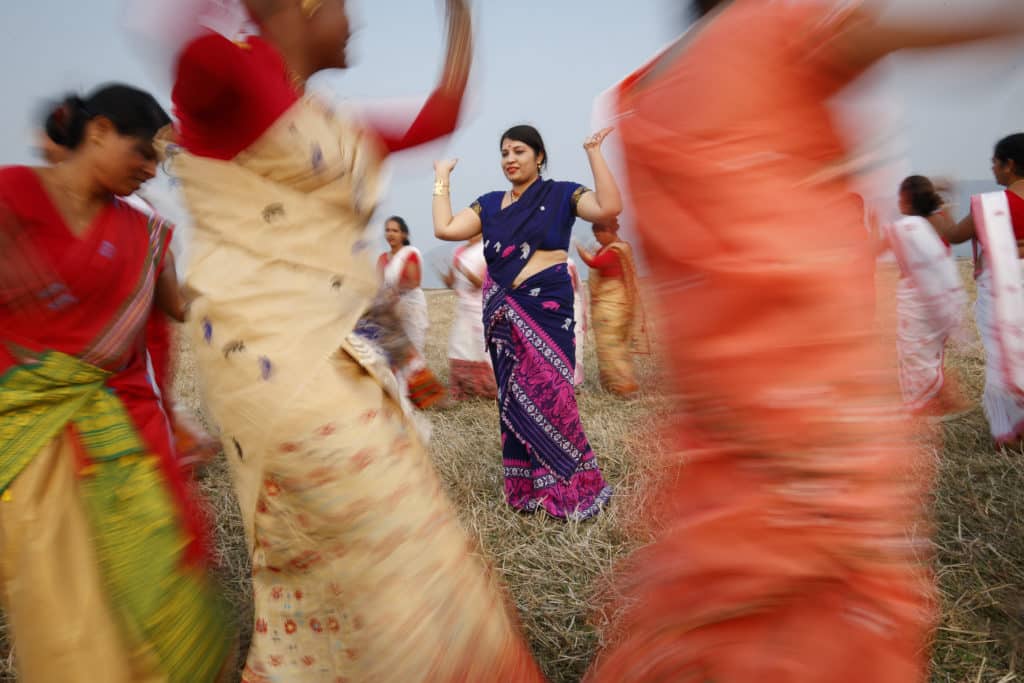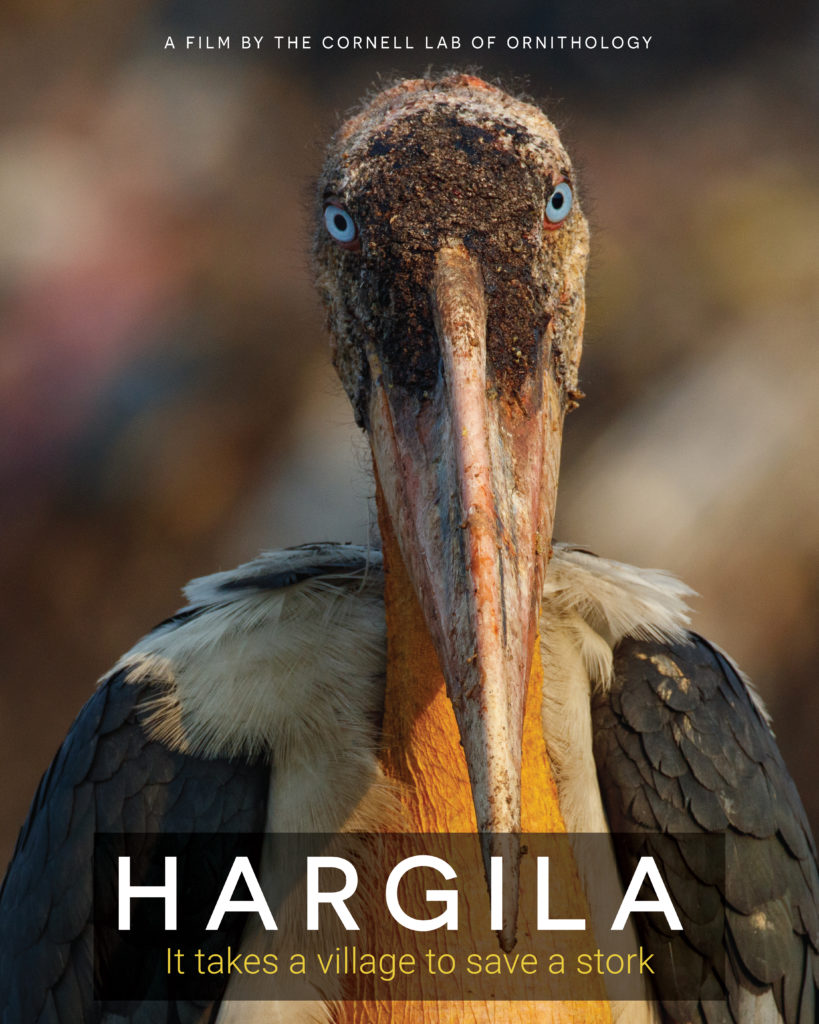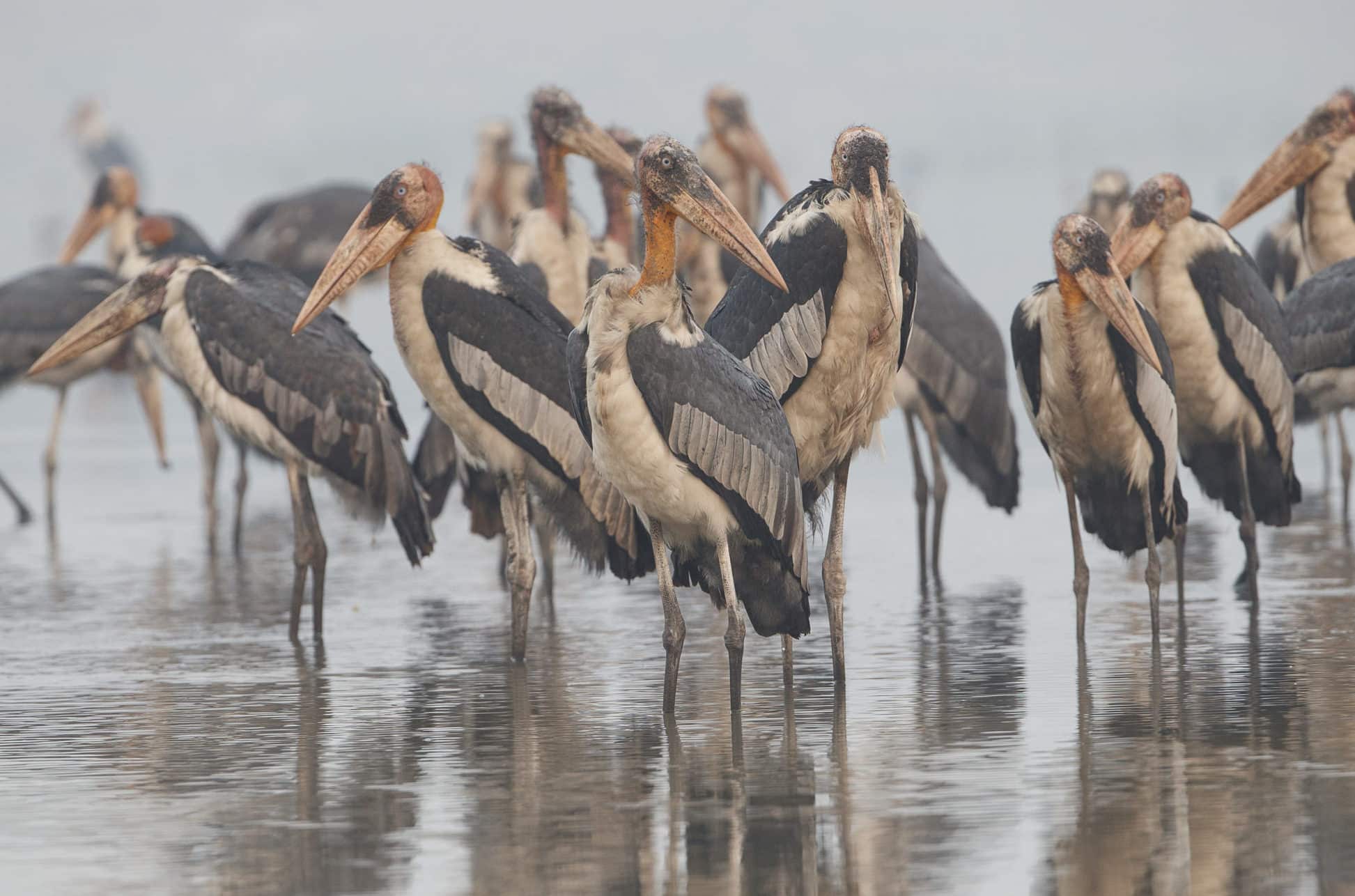They say it takes a village to raise a child – or to save a stork!
The Greater Adjutant Stork (Leptoptilos dubius) is a huge bird – typically standing over 145cm tall – that was once widely distributed across India and Southeast Asia. In Assamese, they are known as “hargila,” or “bone swallower,” for their scavenging habits.
In the past, Greater Adjutants raised their chicks in tall trees during the dry season, flying out each day to take advantage of prey trapped by receding water levels. Today, most of the world’s Greater Adjutants are found in Assam, India, where they nest together in rural villages and pick through garbage dumps for food. The species is threatened by habitat destruction – both on the large scale, through processes like wetland conversion, and on the individual scale, as people may cut down their nest-trees due to their dirty reputation.

As their wetland habitats become polluted or converted, many Greater Adjutants now scavenge in garbage dumps. Credit: Gerrit Vyn
The rapidly declining population of around 1,200 individuals is now classified as Endangered by the IUCN, with the majority living around the city of Guwahati. Since these nesting colonies occur outside of protected areas, community conservation initiatives are stepping up to save the stork from extinction.
Thanks to the efforts of a remarkable conservation leader, Dr. Purnima Devi Barman, there is now a “Hargila Army” of local women working to protect, celebrate, and increase the Greater Adjutant population. Together, they are protecting nesting trees, rescuing fallen chicks, rehabilitating injured birds, and engaging with communities to share knowledge about their avian neighbors. From interacting with schoolchildren to establishing a center where women can learn to craft traditional cloth with stork motifs, Dr. Barman’s Hargila Army is weaving the Greater Adjutant into the local culture.

Purnima Devi Barman and members of the Hargila Army practice song and dance for a celebration. Credit: Gerrit Vyn
In collaboration with Dr. Barman and the NGO Aaranyak, the Cornell Lab of Ornithology released a new film to inspire international support for Greater Adjutant conservation. Hargila follows cinematographer Gerrit Vyn as he collects the first comprehensive natural history video coverage of the stork’s nesting colonies and documents the grassroots efforts to save them.
Click here to watch Hargila and meet Dr. Barman, Vyn, and the bizarre yet beautiful Greater Adjutant Storks!
You can also help to support Dr. Barman’s work here.

A movie poster for “Hargila” – featuring one of its unique avian stars!


